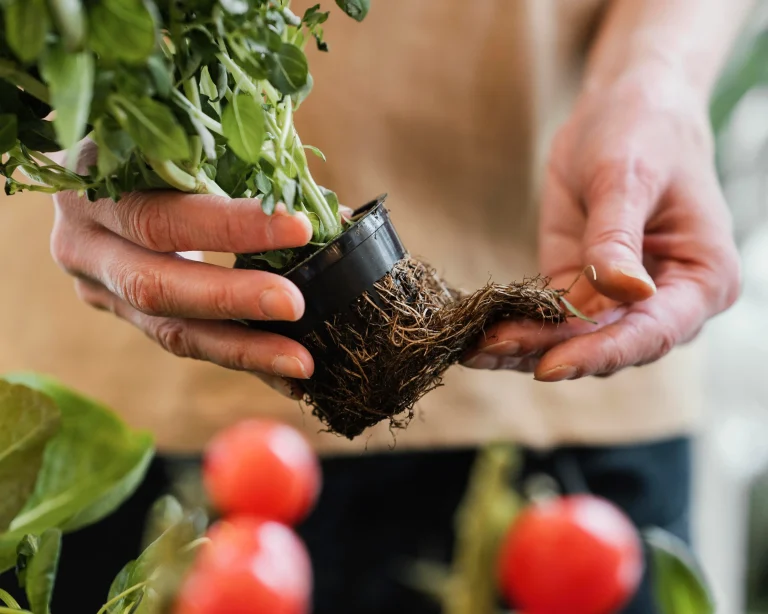Have you ever wished you could grow your own food, cut down on grocery bills, and live more sustainably—all without moving to a farm? That’s the power of micro-homesteading. It’s not about having acres of land; it’s about using the space you already have in a smart, productive way. Whether you live in an apartment with a balcony or a house with a small backyard, you can begin your journey toward a more self-reliant lifestyle today. In this article, you’ll discover ten practical ways to start micro-homesteading, even if you’ve never grown a single plant.
If you’re serious about turning even the smallest space into a productive homestead, The Self-Sufficient Backyard is a powerful companion. It’s packed with practical strategies for growing food, managing water, and preserving harvests—no matter how limited your space is.

What Is Micro-Homesteading?
Micro-homesteading is a modern, compact version of traditional homesteading. It’s designed for small spaces—think backyards, patios, rooftops, or even windowsills. The goal is simple: produce more of what you consume, reduce your reliance on grocery stores, and build a healthier, more sustainable lifestyle.

Unlike traditional homesteading that might involve acres of land and full-time farming, micro-homesteading is achievable for anyone. It’s perfect for beginners who want to ease into the homestead mindset without becoming overwhelmed.
Benefits of Micro-Homesteading
- Better food quality and security
- Lower grocery costs
- Reduced waste and eco-footprint
- Mental health benefits from gardening and self-sufficiency
Let’s dive into ten ways you can get started.
1. Start a Container Garden
One of the easiest and most beginner-friendly ways to start micro-homesteading is by growing food in containers. You don’t need raised beds or a backyard—just a few pots and some sunshine.
What You’ll Need:
- Buckets, pots, or grow bags
- Potting soil and compost
- Sunlight (at least 6 hours daily)
- Seeds or starter plants
Best Crops for Containers:
- Tomatoes
- Peppers
- Lettuce and spinach
- Herbs (basil, parsley, cilantro)
Container gardening is great because it’s scalable. You can start with one pot and add more as you gain confidence.
2. Compost Your Kitchen Scraps
Composting is an essential part of micro-homesteading. It turns your food scraps into nutrient-rich soil for your garden.
How to Get Started:
- Use a countertop bin or DIY outdoor compost bin
- Collect fruit and vegetable peels, coffee grounds, eggshells
- Avoid meat, dairy, and oily foods
- Turn the compost every few weeks
In a few months, you’ll have dark, crumbly compost that feeds your soil and reduces waste.
3. Grow Herbs Indoors
If you have a sunny windowsill, you have the perfect place to grow herbs. It’s one of the simplest micro-homesteading practices to start indoors.
Easy Herbs to Grow:
- Basil
- Mint
- Thyme
- Oregano
- Rosemary
Keep them in small pots with drainage holes, water regularly, and enjoy fresh herbs in your meals year-round.
4. Build a Raised Garden Bed
If you do have a backyard or even a side yard, building a raised bed can greatly expand your micro-homesteading options.
Why Raised Beds Work:
- Better drainage
- Fewer weeds
- Easier on your back
Start with one 4×4 foot bed filled with compost-rich soil. Plant a mix of vegetables, and rotate them each season to maintain soil health.
5. Get a Few Backyard Chickens
Raising chickens can seem intimidating, but for many micro-homesteaders, it’s a rewarding step.
What You’ll Need:
- A secure coop with a nesting area
- Feed and water stations
- At least 10 square feet per chicken
Chickens provide eggs, natural fertilizer, and pest control. Just make sure to check local ordinances first—some cities require permits.
6. Use Rainwater Collection Systems
Micro-homesteading means using your resources wisely, and rainwater is one of the most overlooked.
How to Set Up:
- Use a food-grade barrel under your gutter downspout
- Add a screen to filter out leaves
- Use collected water for your garden
It’s an easy way to cut water bills and make your homestead more eco-friendly.
7. Learn Basic Food Preservation Skills
One of the biggest advantages of micro-homesteading is preserving what you grow. When your garden is producing more than you can eat, you’ll want to save the excess.
Beginner Preservation Methods:
- Canning: Great for sauces, jams, and vegetables
- Freezing: Store extra produce in airtight bags
- Dehydrating: Ideal for herbs, fruits, and even meats
Here are a few simple canning examples:
- Pickled Cucumbers: Made with cucumbers, vinegar, and dill. You’ll need jars and a water bath canner. Properly sealed, these last about 12 months.
- Tomato Sauce: Combine tomatoes with lemon juice. Use a funnel and jars with a canner. This can keep for 12 to 18 months.
- Apple Jelly: Requires apples, sugar, and pectin, plus cheesecloth and jars. Shelf life is about one year.
These skills extend your food supply and reduce waste.
8. Make Your Own Cleaning Products
You might not think of it as micro-homesteading, but replacing commercial products with homemade alternatives is part of the self-sufficiency mindset.
DIY Cleaning Staples:
- All-purpose spray: vinegar + water + essential oils
- Scrub: baking soda + castile soap
- Glass cleaner: vinegar + rubbing alcohol + cornstarch
They’re safer for your home, family, and the environment.
9. Learn to Cook from Scratch
Cooking is central to a successful micro-homesteading lifestyle. Knowing how to turn whole ingredients into meals is both empowering and cost-effective.
Where to Begin:
- Learn a few go-to meals (soups, stir-fries, stews)
- Cook in batches and freeze extras
- Use seasonal produce from your garden
You’ll save money, eat healthier, and waste less food.
10. Join a Local Homesteading Community
You don’t have to do it all alone. Many areas have vibrant communities of micro-homesteaders willing to share tips, seeds, tools, and encouragement.
Where to Connect:
- Facebook groups and Reddit forums
- Local seed swaps and gardening clubs
- Workshops at libraries, community centers, or co-ops
These groups can be invaluable for learning, bartering, and staying motivated.
Recommended Resource: The Self-Sufficient Backyard
Looking to make the most of your home environment? The Self-Sufficient Backyard is a complete guide to living more independently—even if you only have a small patio or yard. Learn how to grow vegetables, preserve food, collect rainwater, and create energy-saving systems that work in tiny spaces. A must-have for anyone on the micro-homesteading path.
Tips for Success as a Beginner Micro-Homesteader

- Start small. Don’t try all ten ideas at once—pick two or three.
- Track your progress. Keep a journal to note what works and what doesn’t.
- Expect setbacks. Mistakes are how you learn.
- Stay inspired. Follow homesteading blogs, podcasts, or YouTube channels.
FAQ: Micro-Homesteading for Beginners
What is micro-homesteading and how do I start?
Micro-homesteading is a form of self-sufficiency that uses small spaces to grow food, raise animals, and make home goods. Start with herbs, composting, or a container garden.
Do I need land to micro-homestead?
Not necessarily. Even with a small patio or balcony, you can grow herbs, compost, and preserve food.
Can I raise animals in a small space?
Yes. Chickens, rabbits, and bees are popular choices—just check local regulations.
Is it expensive to begin micro-homesteading?
It can be affordable. Many tools and containers can be repurposed or sourced secondhand.
How much time does it take each week?
Depending on your setup, expect 5–15 hours per week. Start small and grow at your own pace.
If you’re ready to take the next step,
The Self-Sufficient Backyard will show you how to turn your space—no matter how small—into a fully functional mini-homestead. From food to energy, it’s a comprehensive blueprint for modern-day self-sufficiency.
Final Thoughts: Take Your First Step Toward Micro-Homesteading
You don’t need to move to the country to live more independently. Micro-homesteading brings the spirit of self-reliance into your home, no matter the size. Whether you’re harvesting your first tomatoes or making vinegar cleaner from scratch, every small step counts.
Choose one idea from this list to try this week. Before you know it, you’ll be living with greater purpose, peace, and sustainability—all from your very own micro-homestead.
Ready to transform your space into a thriving micro-homestead? Get The Self-Sufficient Backyard and start building a self-reliant lifestyle—one pot, one jar, and one project at a time.

